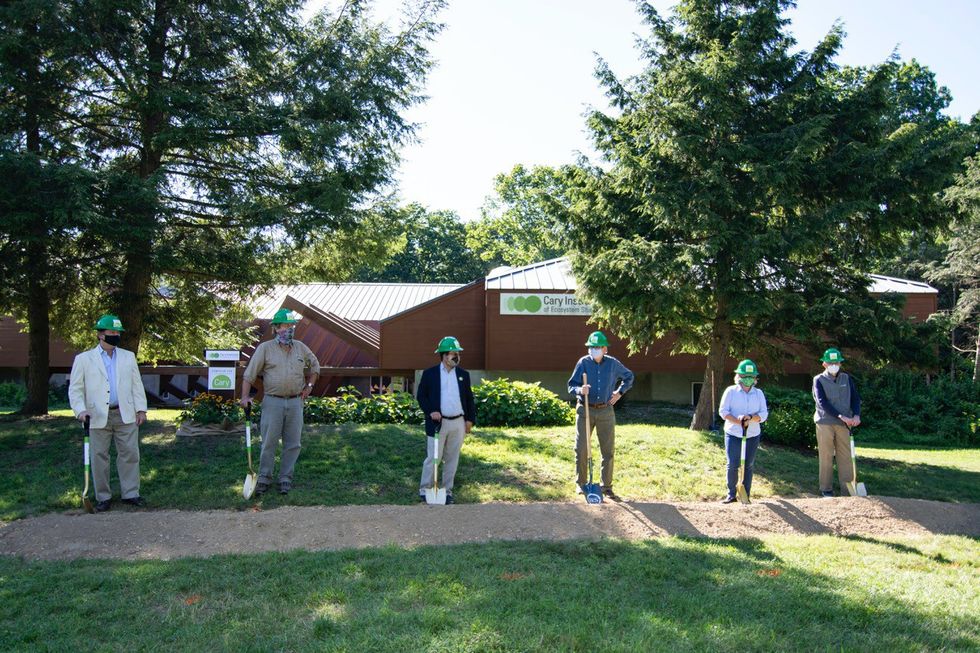MILLBROOK — When the Cary Institute of Ecosystem Studies was founded by Gene Likens, world-renowned ecologist, in 1983, the world was a very different place. Over those 35-plus years, science has evolved, and so has the Cary, and while buildings were added to and improved upon, the main edifice has basically remained the same.
Joshua Ginsberg, the current president of the institute, invited Cary supporters, board members, area residents and community members to share in “Reimagining the Cary Institute” via Zoom on Friday, Aug. 21, and a great many took him up on the offer.
Ginsberg spoke of the future of the Cary, plans for a $13 million renovation, $11 million of which has already been fundraised, with a Campaign for Cary launched to hopefully raise the remaining $2 million.
Ginsberg answered many questions that have arisen concerning the renovation of a building that is a familiar site on Route 44. For instance: Is this the right time to start a project like this, during a worldwide pandemic? Plans were made far in advance of the COVID-19 crisis; it was put on hold, but now it’s felt that it will be safe to proceed. The expected time for the renovation to be completed is between 12 and 18 months. Since many scientists and staff are already working from home, there will be less disruption to the scientific work and research done at the institute. Only a small section of the nature trail, from the fern glen to the headquarters, will be closed, and at times parking in the lot will be unavailable, but other arrangements will be made for onsite access to parking and trails.
Ginsberg said when the staff and the pubic are able to return to the brick and mortar establishment, “they will be returning to a cutting-edge building that has incorporated modern health and safety features, and is highly energy efficient.”
Some have asked why the original building isn’t being torn down, and an entirely new building constructed, but Ginsberg pointed out that the original building was built in 1974 to last, using sustainable products, and it remains sound. It was also noted for its energy efficient design and original saw-tooth roof that allows natural lighting. This original design will be reinstated, and the solar field adjacent to the property will be used as an energy source.
“We are focusing on updating the mechanicals and the way space is used,” he said. “Renovating the space is greener, cheaper, takes less time and is far less disruptive to our campus.
Becker and Becker, architects from Westport, Conn., are doing the work. The pandemic has had some influence on their redesign; separate air handling systems will be used so that all indoor spaces will have their own filtered outdoor air, not recirculated air. They are also observing the need for social distancing and will be using low-VOC products. Hands-free doors and fixtures as well as antimicrobial surfaces are also being use, as well as a design that will keep a connection to nature. A recent renovation provided added community space, which will also be updated with health and safety in mind.
While about 570-square feet will be added, allowing the scientists 1,200 additional square feet of space, the return to the saw-tooth roof will lower the height of the building by approximately 5 feet, the berms that cover part of the building will be removed and an old squash court currently being used for storage will be reclaimed.
Consigli Construction Company of Pleasant Valley will be the construction managers, and a number of local vendors will also be tapped for work, providing local jobs.
The project is expected to get underway just after Labor Day, according to Cary Communications Assistant Erin Frick. The new design “prioritizes energy efficiency, sustainable materials and features that support health,” she added, noting some traffic disruptions may occur periodically, but nothing dramatic is expected.
“The modernized facilities will help us to advance the science needed for environmental solutions,” concluded Ginsberg.
For more on the Cary Institute, go to www.caryinstitute.org.










 Penguin Random House
Penguin Random House
 A needlework example.Cynthia Hochswender
A needlework example.Cynthia Hochswender Alexandra Peters, left, is exhibiting needlework samplers from her collection at the Litchfield Historical Society Museum.Cynthia Hochswender
Alexandra Peters, left, is exhibiting needlework samplers from her collection at the Litchfield Historical Society Museum.Cynthia Hochswender




